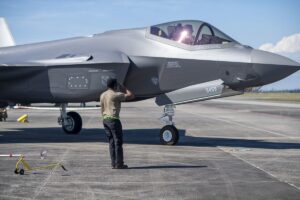
Pratt & Whitney [RTX] has been investing internal funds in an Enhanced Engine Package (EEP) for the company's F135 engine for all three variants of the Lockheed Martin [LMT] F-35 Lightning II--a package that could save tens of billions of dollars in engine life cycle costs and provide the cooling needed for advanced weapons on the fighter by 2027-28. The EEP engine would increase F-35 range and thrust by more than 10 percent each, boost thermal management capacity by more…














